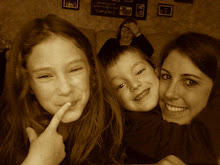The presentation given was based around, “Coaching is Teaching”. Throughout the presentation he touched upon a variety of things such as teaching, coaching, attitudes, philosophies, biomechanics, and composure. One of the things I agreed with was the importance of coaching and biomechanics. In order to be an affective coach, you must be knowledgeable in the way the body moves. He proved this with a simple demonstration. He asked two people to come up to the front, one of them standing there with arms straight out and palms facing down. He asked the other person to push down on the first persons arm while that first person tried to resist his movements and try and keep his hands up. He struggled to keep his arms up and the second person was able to push his arms down with a lot of ease. Then he asked them to perform the same task, but instead have thumb facing up. The person was able to keep his arms up a lot better than the previous try. This is simple due to biomechanics, if the thumb is face up then more muscles are activated to support the arm such as the shoulder and back muscles instead of just the arm muscles. Understanding little things like this will help you become a better coach because you will be able to help correct little things your athletes due and make them stronger and more efficient. Another important part of his speech was one of the last things he touched on and it was about composure. One example he used was Lindsey Jacobellis’s performance in the 2006 Winter Olympics. She was in a snowboard race, and she had a clear cut lead, and it was almost a sure cut lead that would guarantee her a gold medal. However on the second to last jump, it looks like she looked back as she was doing a show boat trick, causing her to wipe out. Instead of getting the gold, she got a silver medal, which she is lucky to get, because she could have walked away with nothing after a stunt like that. It is important to keep your composure at all times because you never know what will happen in sports. There are never any guaranteed or easy victories. You must always go out and give it your best effort and always be working to improve your game.
I really enjoyed this presentation and I hope to bring some of his philosophies to my own coaching techniques someday.



